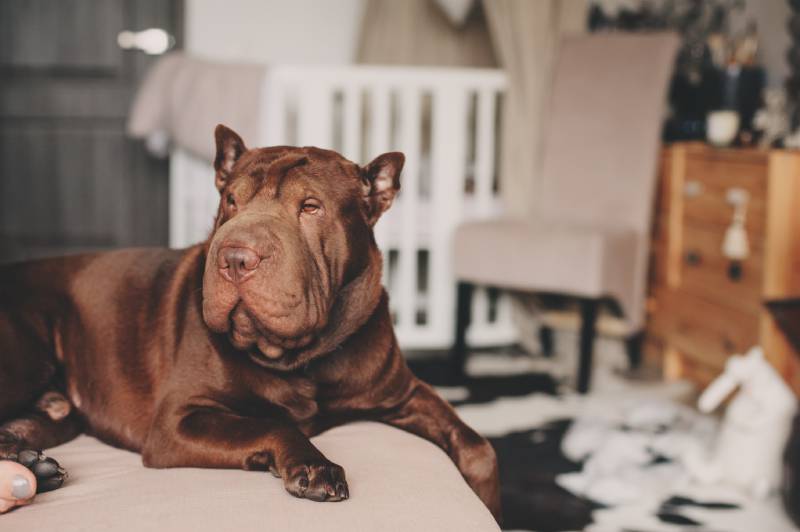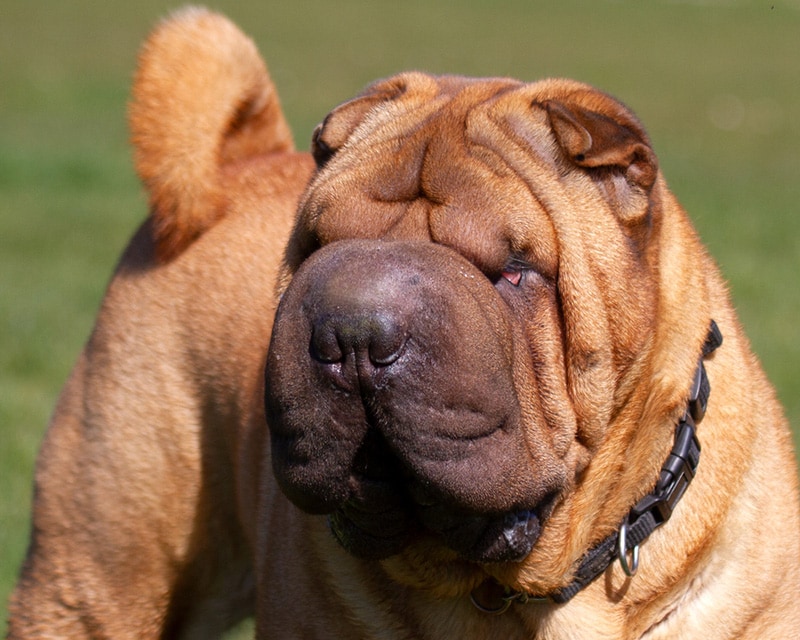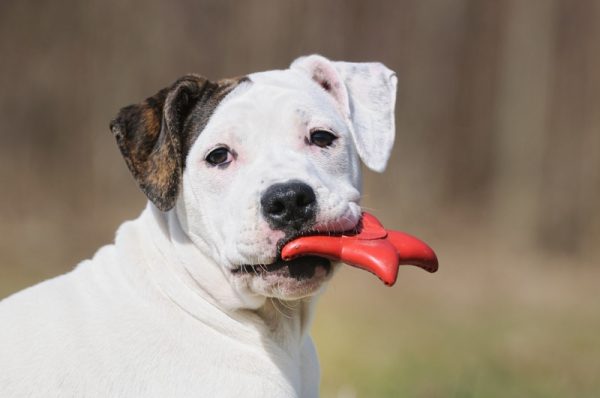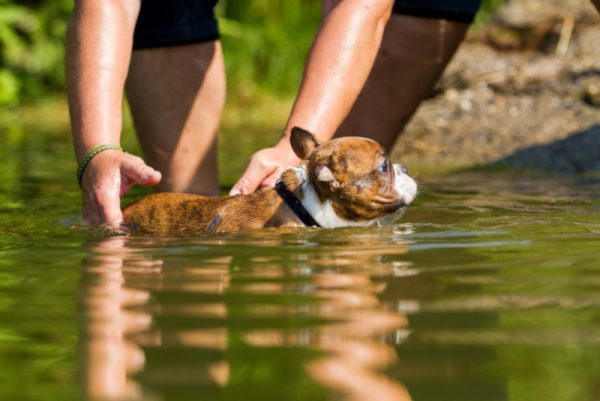In this article
Shar-Peis were developed in China and are known for their bristle-like coat, wrinkled faces, and blue-black tongues. They are an intelligent breed known for being guarded with strangers and fiercely loyal to their families. What else makes them stand out from the crowd?
It can be tricky to determine if a breed is right for your family, and some potential owners prefer examining a list of pros and cons. So, we’ll discuss the advantages and disadvantages of the Shar-Pei so you can decide if they are right for you.

The 5 Pros of Owning a Shar-Pei
1. Suitable for Apartment Living
Thanks to their medium, compact size, Shar-Peis are suitable for apartment living. They weigh around 45–60 pounds and are 18–20 inches tall. Additionally, they have minimal exercise requirements, so they will be satisfied if they get a daily walk of about an hour. They need the opportunity to sniff and explore, so keep your walks varied to engage their minds.

2. Naturally Clean
Shar-Peis do not enjoy getting dirty and have an aversion to water, so it’s unlikely that you will find them rolling around in muddy puddles.
3. Quiet
Another way Shar-Peis are suited to apartment living is they are relatively quiet and do not bark much. However, they have been known to bark when feeling threatened or if they feel the need to protect their families.

4. Fiercely Loyal
Shar-Peis are known for being loyal. They are affectionate with everyone in the family and do best with older children with the proper socialization. They will pick a favorite human within their family and bond most closely with them.
5. Moderate Grooming Required
There aren’t many grooming requirements for a Shar-Pei’s coat. They have short, smooth fur and only need a bath as required, which isn’t very often, considering they are naturally clean. The condition of their fur is thought to have been bred on purpose. Originally, Shar-Peis were bred for hunting and fighting, and the wrinkles and roughness of their coat would have prevented opponents from getting a good grip.


The 6 Cons of Owning a Shar-Pei
1. Strong Personalities
Shar-Peis are strong-willed and intelligent, which can make them challenging for new owners. They need experienced owners with the patience to socialize and train them.
2. Can Be Aggressive
There are a few situations where Shar-Peis have been known to be aggressive. For example, if they are in an unfamiliar situation that causes anxiety, such as a trip to the groomer if they have not been introduced to the environment at a young age, positive reinforcement, including treats and praise, is an excellent way to put them at ease.

3. High Prey Drive
If they aren’t introduced to smaller animals when they’re young, like cats, Shar-Peis may chase or try to herd them. Thousands of years ago they were used to herd livestock in China. It’s important to socialize your Shar-Pei as soon as possible, and if you have other smaller pets, make introductions gradually and supervise all interactions. However, they are better suited to single-pet households.
4. Unsuitable for Allergy Sufferers
Shar-Peis aren’t considered hypoallergenic, and their coarse hair can irritate people with sensitive skin.

5. Prone to Various Health Problems
It’s believed that Shar-Peis were so popular and demand was so high in the 1970s and 1980s that they suffered from unscrupulous overbreeding practices. As a result, there are specific health concerns you should be aware of, such as:
- Ear infections: Shar-Peis are blighted by narrow ear canals that trap moisture, which is the perfect environment for bacteria and yeast to thrive. To minimize the risk of infections, you should clean your Shar-Pei’s ears every 1 to 2 weeks.
- Entropion: While cute, the wrinkles on a Shar-Pei’s face can cause their eyelids to roll toward the eye. This results in their eyelashes and fur rubbing against the eye’s cornea, leading to a painful condition called corneal ulcers. This problem can be rectified with surgery.
- Pododermatitis: Shar-Peis are prone to infections and inflammation between their toes, and this can be due to several reasons, such as problems with hair follicles, allergies, hypothyroidism, or skin mites. Shar-Peis with this condition will lick their paws often, causing their toes to become moist and red, which can cause an infection. If you notice your Shar-Pei licking excessively, make an appointment with the vet.
- Shar-Pei fever (swollen hock syndrome): This condition causes Shar-Peis to become lethargic, experience vomiting and diarrhea, and develop hock joint swelling and a high fever. Dogs that suffer from this condition shouldn’t be bred.
- Skin fold dermatitis: The Shar-Pei’s skin folds trap moisture and can result in skin infections, so you must inspect the folds at least twice a week. If you notice an odor or red, moist, black, or crusty folds, they likely have an infection and must go to the vet. You can use wipes to clean the folds, or your vet might prescribe a medicated shampoo.
6. Expensive and Rare
Shar-Peis are not only rare, but they are also expensive. Adopting one might be the cheapest option, but they are difficult to find. Their care can also become expensive since they are prone to several health problems.


Conclusion
Shar-Peis are loyal, clean, relatively quiet dogs known for being affectionate with their families and stand-offish with strangers. They are prone to aggression when put in unfamiliar situations and have high prey drives, which is why training and early socialization are so important. They do best with experienced owners who have the time and patience for them.
It might seem like Shar-Peis are more trouble than they’re worth, as our list has more cons than pros, but that isn’t the case. They need the right owner to bring out the best in them. When you do, they’ll be the most loving, loyal dog you could ever ask for.
See also:
Featured Image Credit: Sue Thatcher, Shutterstock


















